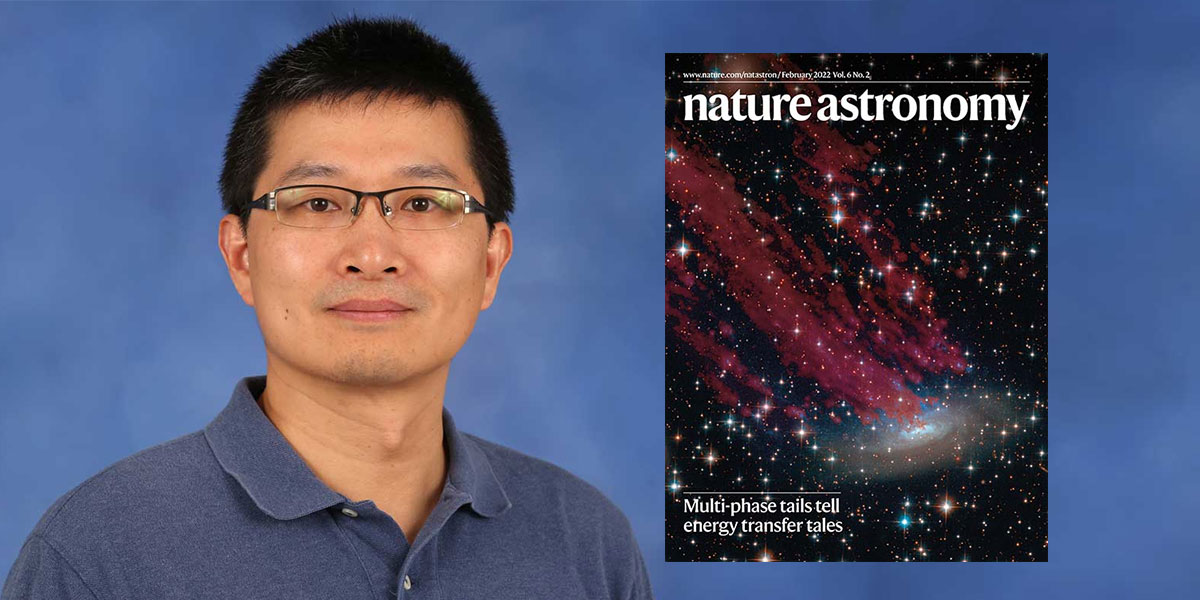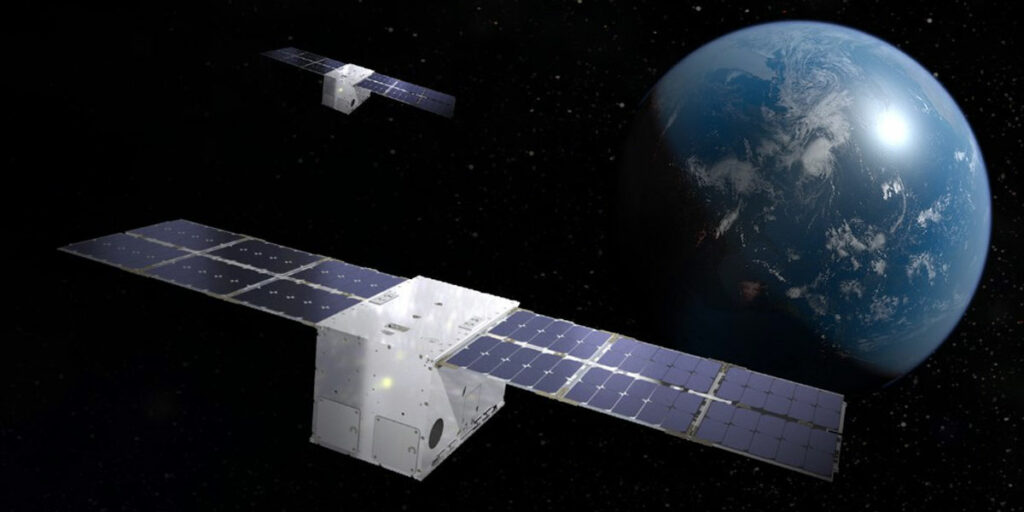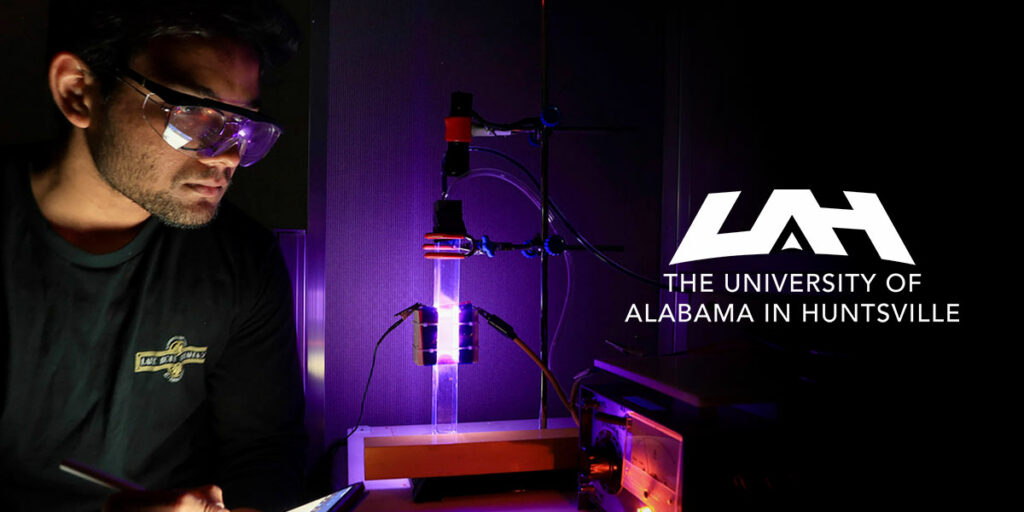An image created by University of Alabama in Huntsville (UAH) astrophysicists who did pioneering research to quantify processes involved in gas mixing in the tails of galaxies being stripped of their gas envelopes has been featured on the cover of the February issue of the journal “Nature Astronomy.”
The issue also contains a paper about the findings authored by Dr. Ming Sun, his UAH postdoctoral research team members Dr. Chong Ge and Dr. Rongxin Luo and other collaborators, and mentions physics graduate student Sunil Laudari, who helped with the image. Nature Astronomy initially published the paper online in December.
The processes by which the gas tails mix with the surrounding intracluster medium are poorly understood, says Dr. Sun, an associate professor of physics and astronomy at UAH, a part of the University of Alabama System.
Galaxies soar in clusters at high speeds of 1,000-2,000 kilometers per second (km/s). During their journey inside clusters, the drag force from the gas between galaxies in the cluster, called the intracluster medium, removes cold gas from galaxies. That process leaves long trails of stripped gas behind them, somewhat similar to airplane contrails and comet tails.
“Those trails, initially composed of cold gas originated from galaxies, will mix with the hot intracluster medium to produce multi-phase gas with various temperatures,” Dr. Sun says. “We all experience mixing of cold and hot gas and fluid in daily life, like when we pour cold milk into hot coffee, or cold air meeting warm air in our atmosphere.”
The energy transfer and mixing in the multiphase medium is an outstanding question in astrophysics that is important to galaxy formation and evolution. Since Dr. Sun discovered the X-ray tail behind ESO 137-001 in 2005, the full story about these interactions has evolved as scientists began to get better and better data with new telescopes.
The X-ray observations were made by NASA’s Chandra X-ray telescope and the European Space Agency’s XMM-Newton. Optical observations were made by the European Southern Observatory Very Large Telescope, the National Astronomical Observatory of Japan Subaru Telescope and the Southern Astrophysical Research telescope.













